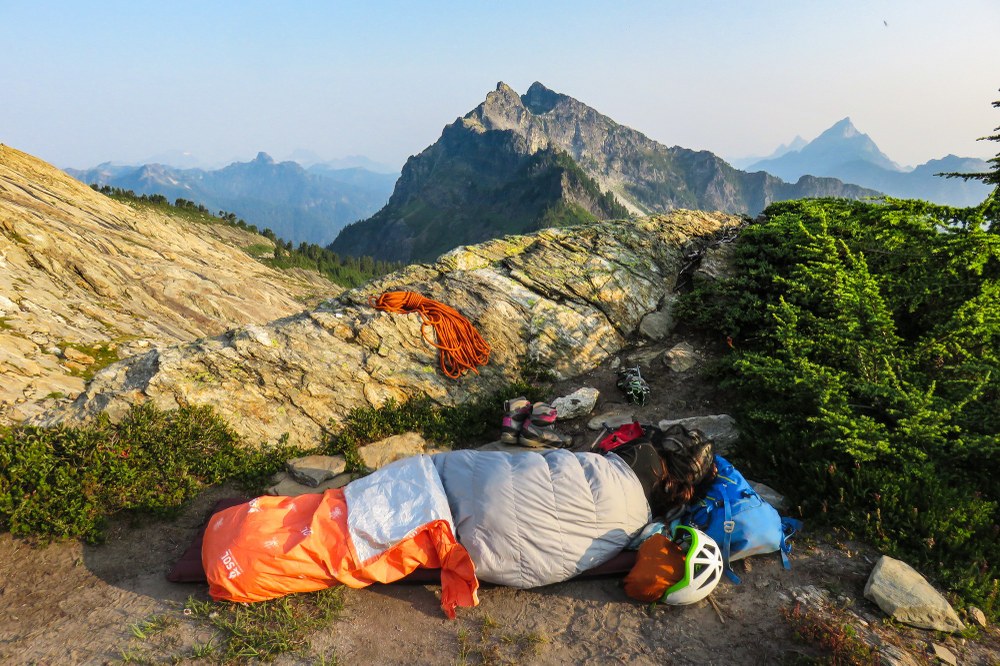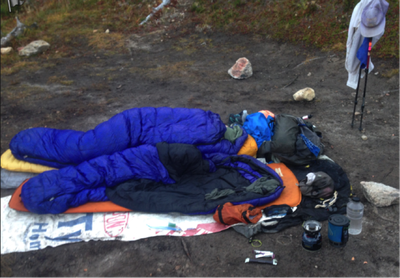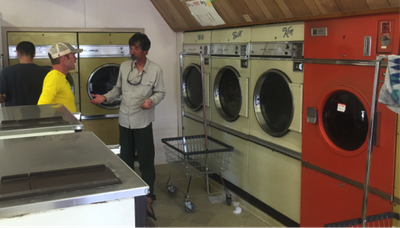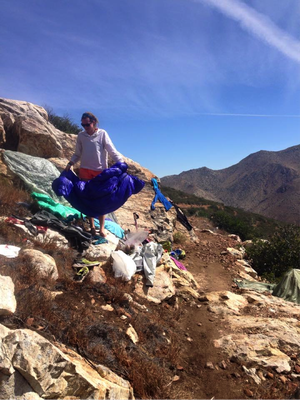
It’s that time of year when I like to take inventory of my backpacking gear and find the chores I put off during the busier hiking months. Remember that small tear in your tent mesh you ignored or the clogged water filter you put off cleaning? Like me, you probably forgot about those issues when you stuffed your gear away last fall and will only remember them when you are already in the wilderness on your first trip. If these simple tasks are left unattended, they can become major annoyances or worse, require expensive replacements.
Today I will focus on taking care of your sleeping bag, which I would argue is your most important piece of gear. I recently washed my down Western Mountaineering bag after heavy use last year. I am only slightly embarrassed to admit it mustered a terrible stench in the process, because it is a sign of a great hiking season.
Keeping your bag clean starts with each time you snuggle up with it. I recommend washing yourself every time before getting in your sleeping bag. “*GASP* but I did (insert any number) of miles today, and I am too tired!” Believe me, it is worth it. Sometime you can take advantage of a nearby creek (downstream from where people obtain water please!). Otherwise a few wet wipes will do the trick. Focus on wiping down your my feet (bonus: this helps to prevent blisters too) and legs because they are likely the dirtiest parts of your body.
It is also a good idea to have a designated set of clothes to sleep in, which will keep dirt out AND help you sleep warmer. Some people use liners to protect their sleeping bags. I’ve seen some awesome homemade silk ones. I personally can’t sleep with a liner, because I move around too much. Still, liners can easily be washed after each trip and are good for people who choose to ignore my recommendations above. The bottom line is you want to extend the life of your sleeping bag by preventing debris from working its way into the lining of your bag, which will break down the filling over time.
Even if you use these precautions, your bag will inevitably gain a stench thanks to body oils and sweat. I try to wash my bag as little as possible, specifically once a year or every other year, because it reduces the loft and thus its ability to provide warmth. When you cannot ignore the persistent pleas of your hiking partners any longer, start by checking your manufacturer’s recommendations for washing. This can be found on the tag on the outside of your bag or on their website. Next, find either a bathtub or a front-loading washing machine. Note: you can also have it professionally laundered, but where is the fun in that?! Whatever you do though, do not dry clean it or put it in a top loader! I typically go to a laundromat to find a front loader or ask one of the earlier mentioned hiking partners to let me use theirs.
I recommend purchasing NikWax Down Wash Direct for soap. It runs about $11 and is carried by most outdoor retailers. While the directions are extremely easy to follow, I had a hard time eye-balling the recommended soap amount. It’s about 1/3rd of the bottle. This soap can also be used for synthetic bags. I’ll admit, over the past eleven years I have used a gentle, albeit normal detergent with my synthetic North Face Cat’s Meow many times. I would argue it still works well. However, sleeping bags are expensive, and I believe it is worth purchasing the NikWax soap, which you can use 3 times. After adding the soap, chose a cool or cold water setting. I would not recommend washing more than two bags at a time. I usually throw in my down jacket with my sleeping bag and both get clean. Also, unzip your bag completely before washing and loosen any chords around the hood.
Afterwards, it is recommended to air dry your sleeping bag. Make sure it is secure, but do not use rocks, because this may rip the wet fabric. If you need to expedite the process, you can use a dryer on a very low heat setting. Your bag is going to be heavy after washing, especially if it is waterproof or water resistant, so carefully transport it to the dryer. The drying process can take anywhere from 3 to 6 hours. For down, I highly recommend adding tennis balls. I use three, but I know some people who use up to 12 to help fluff it up. Take the bag out every 45 minutes or so to check to make sure the fabric isn’t too hot. I also take time to manually work out the down clumps. Once it is completely dry (at least for 24 hours), store in a loose cotton sack in a cool place. DO NOT store your bag in a stuff sack, because it will greatly affect the loft of your bag and its ability to keep your body warm. Honestly, I would never use a stuff sack for backpacking, but we can talk about that more later.
Questions? Other tips?
Let me know! sarahmccroy@gmail.com.
Airing it out on the PCT
cowboy camping + ground cloth = happy sleeping bag & camper".

Washing with friends is always more fun!

 Sarah McCroy
Sarah McCroy

